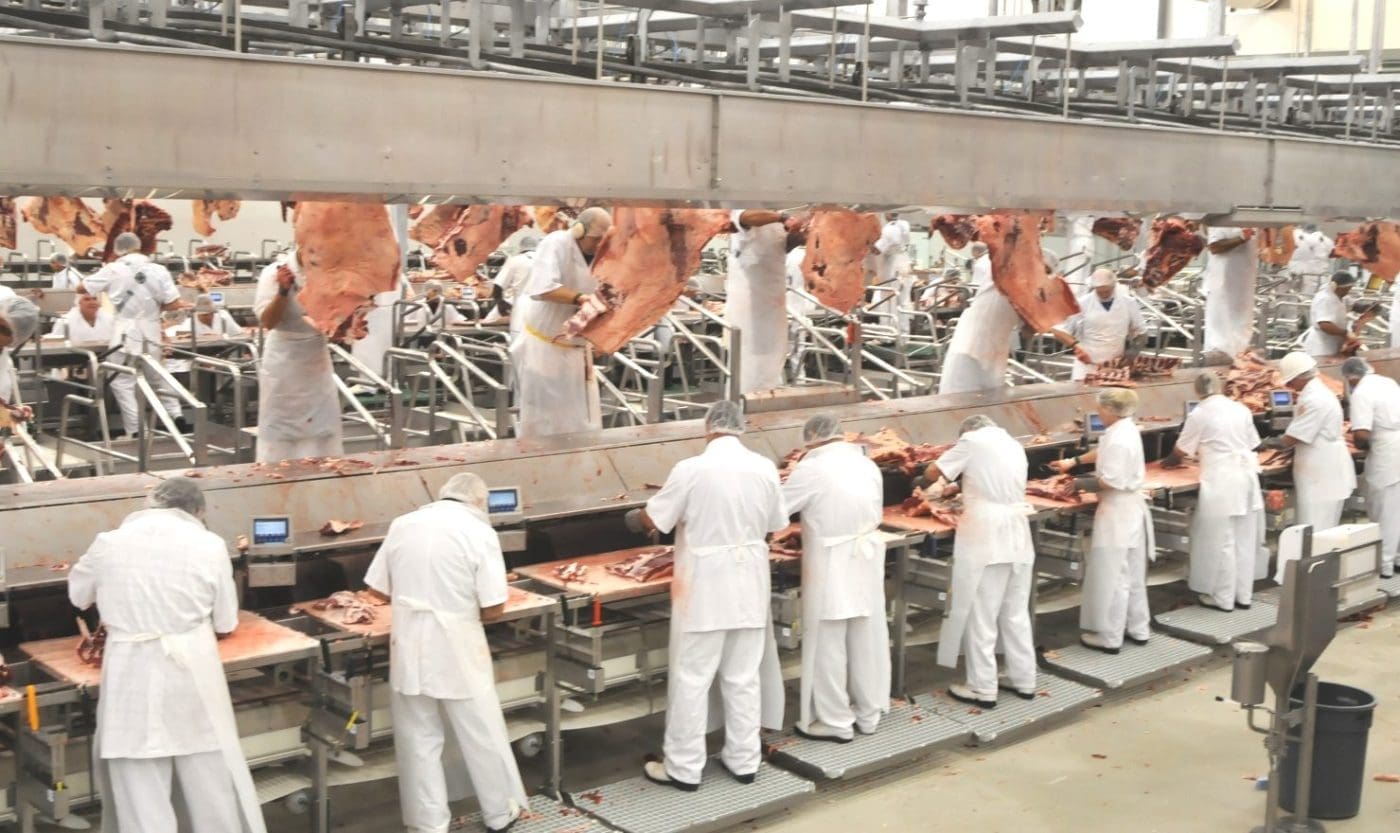CENTRAL Queensland grassfed beef producer Ian McCamley has called for government action to help avoid cattle market collapses due to processing bottlenecks caused by labour shortages.
His comments came in response to Beef Central’s recent article focussing attention on the potential impact on slaughter (and even feeder) cattle prices this year from labour challenges in meat processing.
 The article suggested current weekly slaughter numbers at around 115,000 head are now seen to be close to the threshold set by currently available labour levels in meat processing plants. Any excess supply significantly above that number could significantly impact cattle pricing, let alone reserving a space in a processor’s kill roster, trade contacts said.
The article suggested current weekly slaughter numbers at around 115,000 head are now seen to be close to the threshold set by currently available labour levels in meat processing plants. Any excess supply significantly above that number could significantly impact cattle pricing, let alone reserving a space in a processor’s kill roster, trade contacts said.
“A decade ago we had the highest priced global beef market we had ever seen up to that time, with huge demand for Australian beef,” Rolleston beef producer Ian McCamley said.
“Yet Australian cattle were the cheapest in the world. The reason was that our supply of market-ready cattle well and truly exceeded our processing capacity, due to drought.”
“Producers had space bookings with processors out for months ahead, with no price locked in. The result was that Australian cattle prices fell to extremely low levels and producers were unable to benefit from high global beef demand.”
Plenty would argue that Australia’s processing capacity today is more depleted than it was back then, due to labour shortages, Mr McCamley said.
“We’re heading for the same situation we had a decade ago, likely worse,” he said.
“Our bottleneck of processing capacity (due to labour) completely corrupts the normal supply and demand flow. This clearly needs to be addressed to avoid the lowest of the cattle price cycle bottoms.”
 Mr McCamley said a complete re-think was needed over how the industry processed cattle, so that plants are less labour-reliant – and more importantly, are modulated and dynamic in design so they can quickly and seamlessly scale up and down depending on supply.
Mr McCamley said a complete re-think was needed over how the industry processed cattle, so that plants are less labour-reliant – and more importantly, are modulated and dynamic in design so they can quickly and seamlessly scale up and down depending on supply.
“I believe this has started in terms of robotics (see earlier Beef Central story) however much more needs to be done and fast-tracked,” he said.
“Government support would prove to be a very sound investment of tax dollars. We won’t avoid the low bottom of this current cattle price cycle, however let’s all pull together to do what needs to be done to lift the bottom of the next one,” Mr McCamley said.
Last week’s national adult beef kill reported by NLRS reached 114,038 head, it’s highest level since December 2020, when the drought started to break.
Some stakeholders have speculated that the lengthy delay in the launch of Thomas Foods International’s new beef processing facility at Murray Bridge in South Australia is due to challenges in raising as large processing workforce from scratch. TFI had originally envisaged a start around the beginning of the year.
In the United States, the US government is financially supporting new independent beef processing ventures, offering tens of millions of dollars in grants and incentives to get new ventures off the ground.
This follows a perceived shortage in US processing capacity, which came to a head during 2020 when 40 percent of the nation’s processing capacity was knocked-out for several weeks by COVID issues within its labour force, and a fire in a large processing establishment. This left a large hole in US domestic beef supply, triggering a brief panic buying spike out of Australia.
Beef Central’s US correspondent Steve Kay discusses the recent US developments in an upcoming podcast interview with The Weekly Grill podcast host, Kerry Lonergan.

Agree totally
Timely article. But has anyone investigated the fact that the processing sector across all proteins is potentially happy to drag their feet. Hypothetically if you had your own abattoir given the current state of play with energy costs etc and the risk that America could reignite protein prices, it would be in your best interests to stifle the market as much as possible. Just a cynical observation. Cheers Matthew Della Gola
Before i get started here i must disclose that i am a grass fed beef producer, having said that i am extremely disappointed with the greed that is now in the industry. When live cattle prices doubled in 2018 the consumer didn’t appeal to the government to subsidise their beef purchases. This created the current CPI inflation which is causing the reserve bank to increase interest rates. The beef producers and primary producers as a whole saw this period as their opportunity to increase their production through the purchase of more land in affect driving the price of land to levels which are not only unsustainable but totally unachievable for those young people and industry entrants who don’t already have land or family backing. Long story cut short is that the greed of one generation has caused another to never get an opportunity, livestock prices must come down to meet the realistic market and producers are going to have to realise that the past 5 years have not been normal and never will be again. The Australian tax payer will not be giving a hand out to help an over inflated market cushion their inevitable market correction.
Producers have increased numbers since the drought not out of greed but necessity. I believe production is still below pre drought levels. Most producers are still trying to pay back huge debt incurred keeping cattle alive during the drought.
Most realised that 2022 price levels were unlikely to be maintained. However it is frustrating to take $500 less per head for cattle sold to a supermarket and then see their prices as high as ever. Eg Mince $20/kg Scotch fillet $47/kg.
Just a quick ‘Price check’ George – as of Friday PM, Woolworths everyday scotch fillet $43/kg regular mince (82CL) $16/kg, lean mince $19/kg; Coles scotch $43.75/kg, everyday mince (83CL) $14/kg, lean $19/kg. It’s worth remembering that there’s a considerable lag-time between purchasing a (relatively cheap) feeder steer or heifer this week, and the presentation of that beef on the retail shelf. Say 70 days grainfeeding; 4 days transport feedlot-abattoir, liairage, slaughter, carcase chilling, and boning into boxed primals; MSA tenderness guarantee aging anywhere from 5-21 days; 4 days portion-cutting, retail packaging and distribution from Woolies DCs into its 1000 stores Australia wide. I make that 83-99 days. It means steers bought at relatively cheaper prices – say mid-February – are not due to be reflected in the retail cabinet until mid-May or early June. We’ll ask Woolies and Coles for some comment on this for a story. Editor
If you’re looking for data on labour shortages in meat processing try an independent commentator such as ABARES. Look also at the strategy U.S. meatpackers used last year to slow processing at a time of good cattle supply.
We don’t think its necessary to ask an economist at ABARES about processing labour shortage. Better to go direct to the source – ask any red meat processor in Australia you choose. We saw no evidence whatsoever of US packers last year ‘slowing processing’, as you suggest. In fact US kills were record high during 2022, due to the drought. Look no further than booming US exports last year to see clear evidence of that. Editor